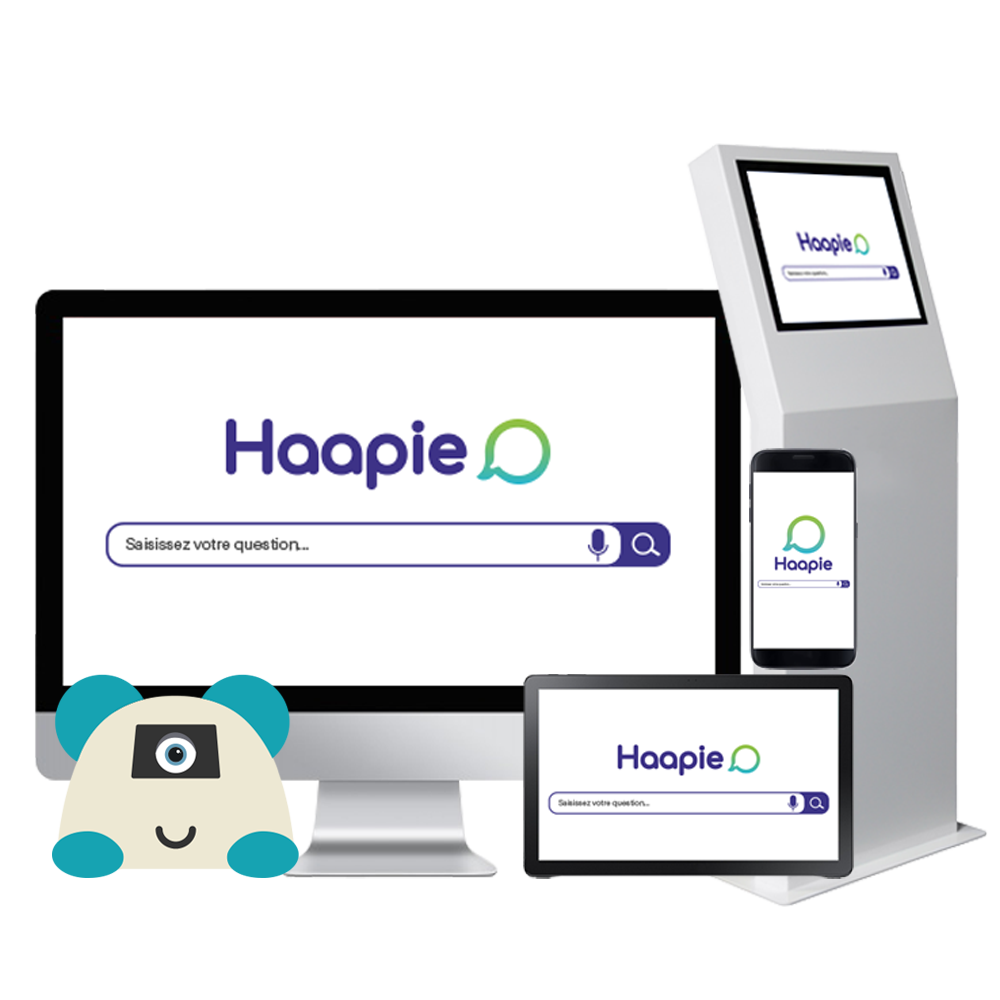Our technology
Haapie proposes an artificial intelligence platform which can be used to develop competent conversational systems in complex specific domains. Rather than heavy general assistants, which are expensive to operate, and subject to 'hallucinations', typical of current methods, this platform, called HoTTBrain, is based on a hybrid system, using both intermediate-sized transformer-type neural networks, and logical inferencing systems.
This platform is the technological heart of the assistants proposed by the start-up.
In addition to AI modules (HoTTBrain), it can be associated with a voice recognition system (onboard or connected), as well as adaptable automatic knowledge acquisition components.
CONVERSATIONAL AI

Haapie's cognitive systems are used to analyse structured and unstructured data in documentation and data bases. These use deep neural networks and are also based on inferencing systems and reasoners which are typically used in the field of automatic demonstration and proof of theorems.
Our systems robots analyse huge quantities of data in the assistant's knowledge bases to extract and deduce information and meaning, so that you can query the assistant spontaneously in natural language, and obtain your reply and the information you are searching for.
DIALOGUE MANAGEMENT

Haapie's dialog management component can, like common systems, hold an interactive conversation in real time.
However, for certain complex exchanges, it is also possible to submit to the assistant, a textual description, possibly a long one, of the request.
The assistant can then take the time necessary to define and validate its response. The conversation is then temporarily put in the background.
UNSUPERVISED LEARNING

The quality and accuracy of the knowledge manipulated and exposed by a conversational system are essential. In current systems, based solely on 'Large Language Models (LLMs)', this knowledge is not explicit, and is diluted in the immense volumes of texts which were used either for the initial learning of the founding models, or for their adaptation – or fine-tuning.
This results in phenomena of ‘hallucinations’, which it would be better to simply call factual errors, or contentious behaviors, during conversations.
The HoTTBrain self-learning system is different. It allows, for applications that require a high level of confidence in the answers provided, to differentiate between absolutely certain and sure answers from those which are more speculative.
SPEECH RECOGNITION

Haapie develops speech recognition which is specifically designed for dialogues on the latest interfaces such as robots, connected objects or smart devices. This requires high-frequency audio pick-up with multiple microphones (4 to 6 minimum) and audio pre-processing with speaker recognition and localization, denoising, echo cancellation, and specifically adapted and efficient voice activity detection.
3 steps to creating your assistant
Look and feel of the assistant
Depending on your use case, the assistant should be accessible to users in the office, at home or on the road. It can be deployed on any object: PC, mobile device, robot, kiosk or connected object.
Why should you choose Haapie's solution?

CONFIDENTIALITY/SECURITY
By deploying Haapie's platform locally on your premises, you can ensure that the information that you wish to make available through the assistant
will remain safe.
By avoiding a cloud solution, your service will be private by design and thus you will stay in control of who can access the platform and the data, and how the data is stored and used.
This ensures maximum security for your data and gives you all the means to comply with GDPR.

CUSTOMISATION / PERFORMANCE
We can deploy the standard platform, or combine our various software and hardware components according to your requirements, to build a tailor made assistant.
The voice interface can also be adapted to your professional jargon, your brand names and the sound environment to optimise recognition rates.
Haapie-One
In the past, Haapie developed Haapie-One, a discreet and versatile robot assistant.
Haapie-One, presented at the CES in Las Vegas, was a material form of Haapie's cognitive and voice assistant. It was connected to Haapie's platform in the same way as a mobile or web app.
The Haapie-One was created before Amazon's Alexa or Google Home and was therefore the precursor of this type of interface.





